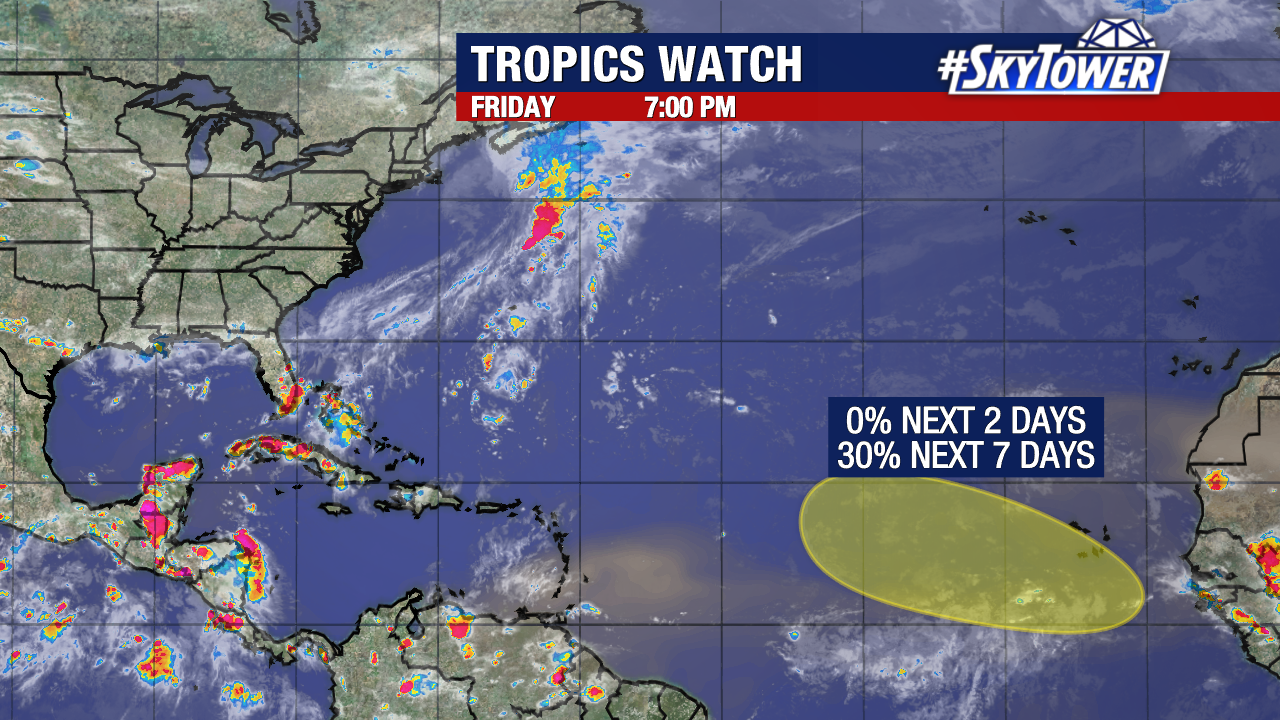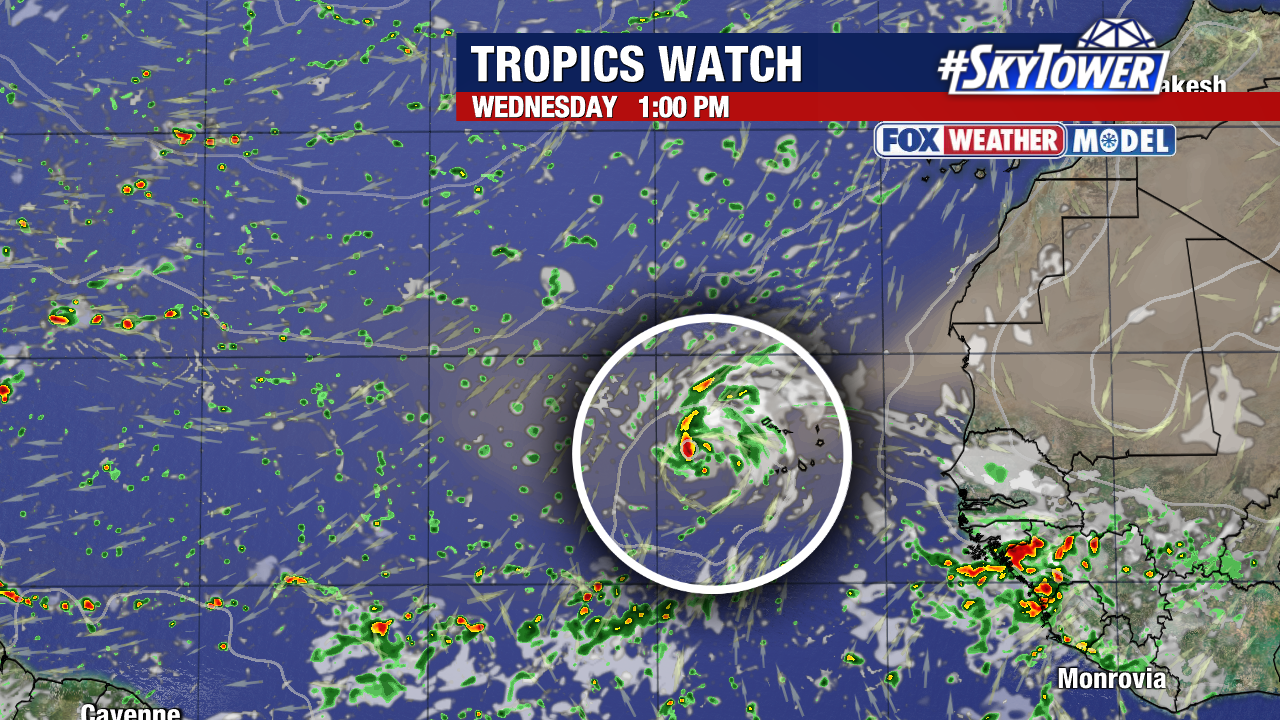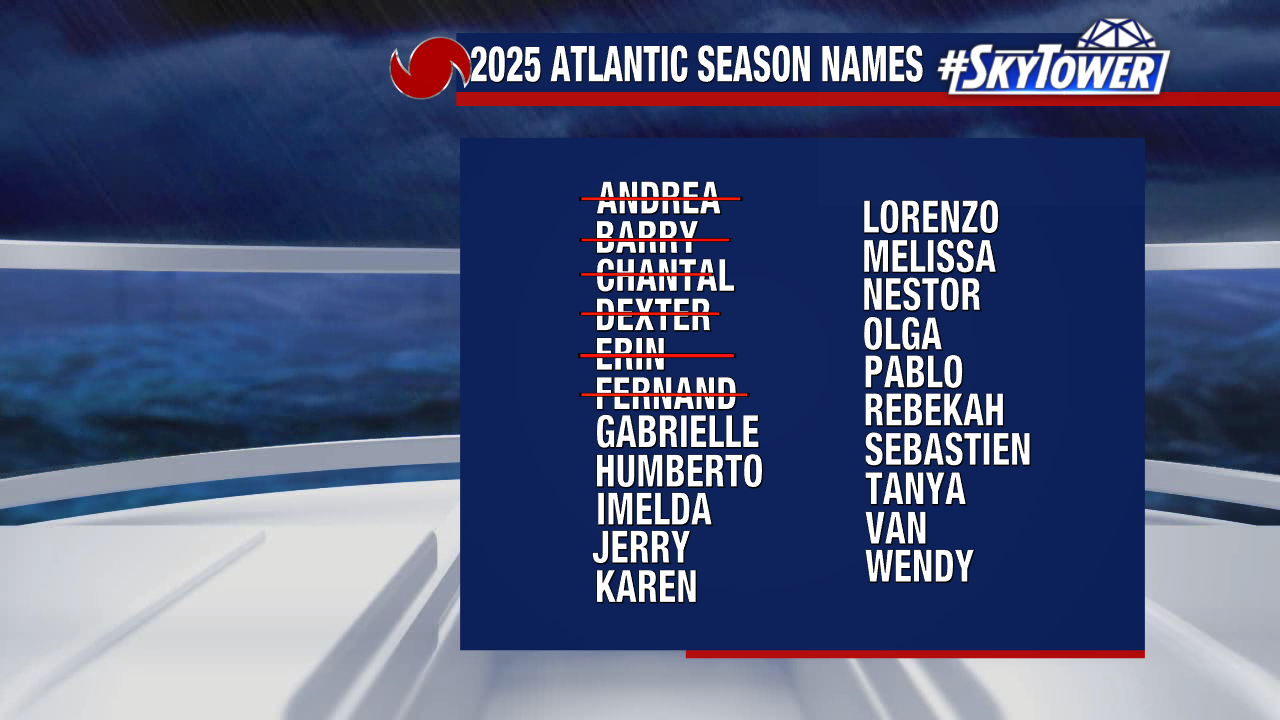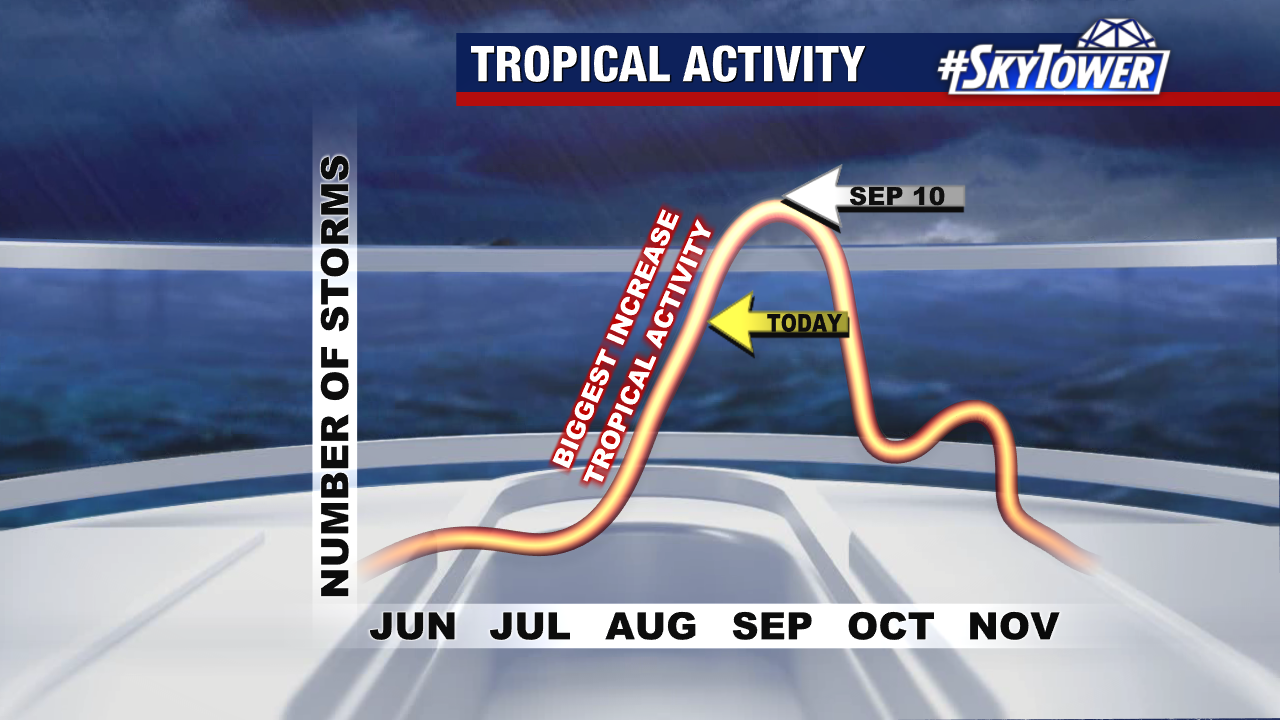
We are only monitoring one disturbance in the Atlantic at this time. A tropical wave will emerge off the coast of Africa over the weekend and have a 30% chance of development by the middle to end of next week near the Cabo Verde Islands.

It’s still too early in the forecast process to speculate where it would track from there.

The next name on our 2025 storm naming list is Gabrielle.

We are now less than two weeks from the official peak of hurricane season (September 10th). Despite the lull in recent activity, its important to not let your guard down as about 74% of the season’s activity statistically lies ahead.






